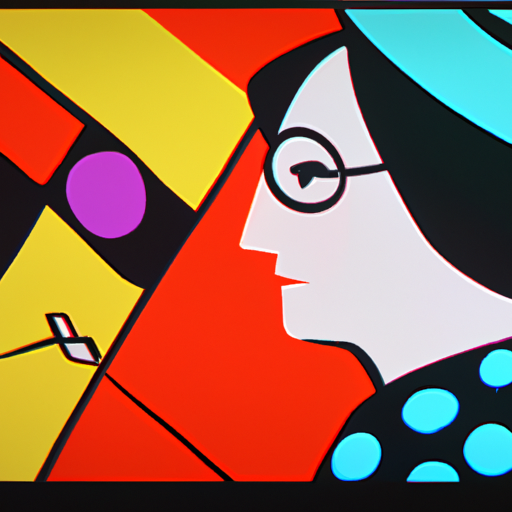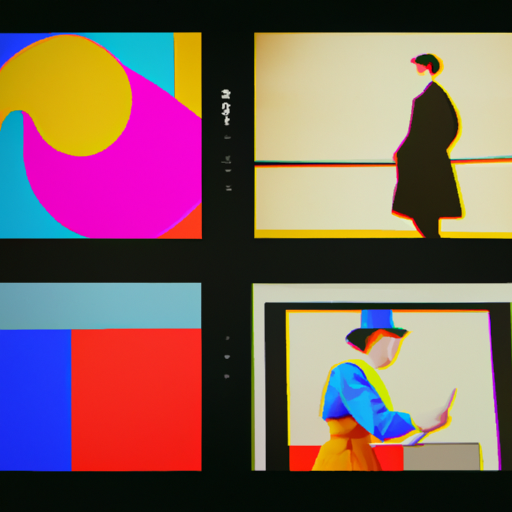
-
Table of Contents
- The Bold Colors of Wassily Kandinsky in Graphic Design
- The Influence of Kandinsky’s Color Theory
- Examples of Kandinsky’s Color Theory in Graphic Design
- Case Studies: Kandinsky’s Influence in Graphic Design
- Case Study 1: Coca-Cola
- Case Study 2: Spotify
- The Power of Bold Colors in Graphic Design
- Conclusion
The Bold Colors of Wassily Kandinsky in Graphic Design

Wassily Kandinsky, a Russian painter and art theorist, is widely regarded as one of the pioneers of abstract art. His use of bold and vibrant colors revolutionized the art world and continues to inspire graphic designers today. In this article, we will explore the influence of Kandinsky’s bold colors in graphic design and how they can be effectively used to create visually striking designs.
The Influence of Kandinsky’s Color Theory
Kandinsky believed that colors had a profound impact on human emotions and that they could evoke specific feelings and moods. He developed a unique color theory that emphasized the psychological and spiritual aspects of color. According to Kandinsky, each color had its own inherent meaning and could be used to convey different emotions.
Graphic designers have embraced Kandinsky’s color theory and incorporated it into their work. By understanding the emotional associations of different colors, designers can create designs that effectively communicate a specific message or evoke a desired response from the audience.
Examples of Kandinsky’s Color Theory in Graphic Design
Let’s take a look at some examples of how Kandinsky’s color theory has been applied in graphic design:
- Red: Red is often associated with passion, energy, and excitement. In graphic design, it can be used to create a sense of urgency or draw attention to a particular element.
- Blue: Blue is commonly associated with calmness, trust, and reliability. It is often used in corporate designs to convey a sense of professionalism and stability.
- Yellow: Yellow is a vibrant and energetic color that is often associated with happiness and optimism. It can be used to create a cheerful and uplifting mood in designs.
- Green: Green is often associated with nature, growth, and freshness. It is commonly used in designs related to sustainability or environmental causes.
By understanding the emotional associations of different colors, graphic designers can strategically use them to create designs that resonate with the target audience and effectively convey the intended message.
Case Studies: Kandinsky’s Influence in Graphic Design
Several case studies demonstrate the impact of Kandinsky’s bold colors in graphic design. Let’s explore a few notable examples:
Case Study 1: Coca-Cola
Coca-Cola, one of the world’s most recognizable brands, has effectively utilized Kandinsky’s color theory in its branding. The company’s iconic red logo evokes a sense of excitement and energy, which aligns with the brand’s image as a refreshing and invigorating beverage. The use of red in Coca-Cola’s branding has contributed to its success and brand recognition.
Case Study 2: Spotify
Spotify, a popular music streaming platform, has incorporated Kandinsky’s color theory into its user interface design. The use of vibrant green throughout the app creates a sense of freshness and energy, reflecting the platform’s focus on discovering new music and staying up-to-date with the latest trends. The strategic use of color in Spotify’s design enhances the user experience and reinforces the brand’s identity.
The Power of Bold Colors in Graphic Design
Kandinsky’s bold use of colors in his paintings has had a lasting impact on graphic design. Bold colors can capture attention, evoke emotions, and create memorable designs. Here are some reasons why bold colors are powerful in graphic design:
- Attention-grabbing: Bold colors stand out and can quickly capture the viewer’s attention in a crowded visual landscape.
- Emotional impact: Bold colors have a strong emotional impact and can evoke specific feelings and moods.
- Memorability: Designs that use bold colors are more likely to be remembered by the audience, making them effective in creating a lasting impression.
- Brand identity: Bold colors can help establish a strong brand identity and differentiate a brand from its competitors.
Conclusion
Wassily Kandinsky’s bold use of colors in his paintings has had a profound influence on graphic design. His color theory, which emphasizes the emotional and psychological impact of colors, has been embraced by graphic designers worldwide. By understanding the associations and meanings of different colors, designers can create visually striking designs that effectively communicate messages and evoke desired emotions.
Whether it’s the vibrant red of Coca-Cola’s logo or the fresh green of Spotify’s user interface, Kandinsky’s bold colors continue to shape the world of graphic design. By harnessing the power of bold colors, designers can create designs that capture attention, evoke emotions, and leave a lasting impression on the audience.
